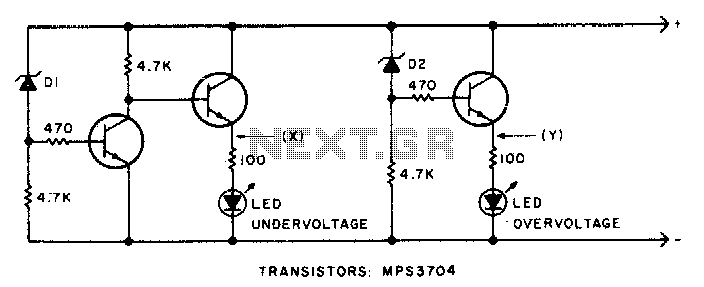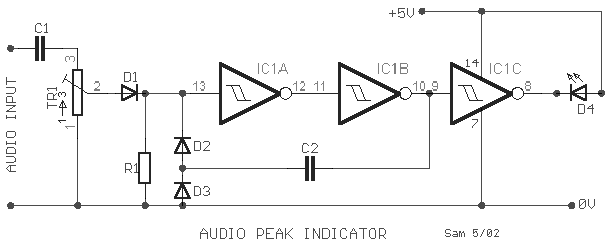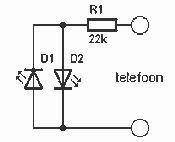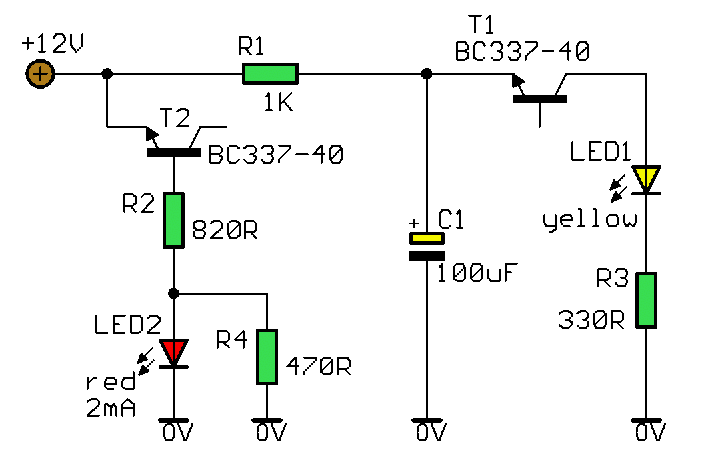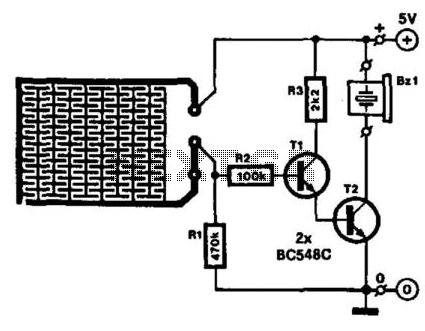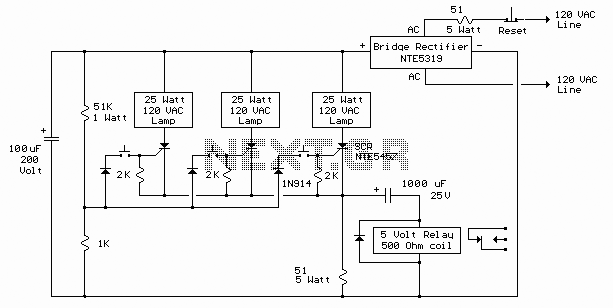
Bar-graph indicator for ac signals
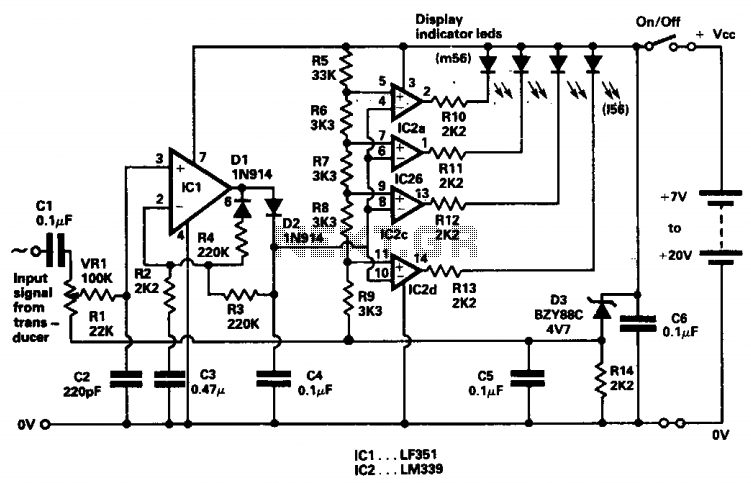
The indicator was designed to display the peak level of small AC signals from various transducers, including microphones, strain gauges, and photodiodes. The circuit responds to input signals within the audio frequency spectrum, specifically from 30 Hz to 20 kHz, although its response can extend up to 40 kHz with reduced sensitivity. The maximum sensitivity for the specified component values, with VR1 set to its maximum position, is 30 mV peak-to-peak. The indicator can be calibrated by adjusting VR1 when an appropriate input signal is applied.
The indicator circuit is a fundamental tool in audio and signal processing applications, allowing for the visual representation of signal levels. The design typically incorporates an operational amplifier (op-amp) configured as a peak detector. This configuration captures the peak voltage of incoming AC signals and holds that value for a brief period, enabling an easy readout on a display element, such as an LED or an analog meter.
Key components include the op-amp, which amplifies the input signal, and a diode that rectifies the AC signal to DC for peak detection. A capacitor is used to smooth the output, providing a stable reading that corresponds to the peak level of the input signal. The variable resistor VR1 serves as a gain control, allowing for calibration to accommodate different signal strengths. By adjusting VR1, the circuit can be fine-tuned to ensure accurate peak level readings across a range of input voltages.
The frequency response of the circuit is crucial, particularly in applications involving audio signals. The specified range of 30 Hz to 20 kHz covers the majority of human hearing, making this indicator suitable for audio engineering tasks. The extended response up to 40 kHz may be beneficial in applications involving ultrasonic signals or high-frequency transducers.
Calibration of the circuit is an essential step to ensure accurate readings. By applying a known input signal and adjusting VR1, the user can set the indicator to reflect true peak levels, compensating for any variations in component tolerances or environmental factors. This calibration process enhances the reliability of the indicator in practical applications, ensuring that it meets the necessary performance standards for professional use.
In summary, this peak level indicator circuit is a versatile and essential tool for monitoring small AC signals from various transducers, providing a clear and accurate representation of signal levels across a wide frequency range.Indicator was designed for displaying the peak level of small ac signals from a variety of transducers including microphones, strain gauges and photodiodes. The circuit responds to input signals contained within the audio frequency spectrum, i.e., 30 Hz to 20 kHz, although a reduced response extends up to 40 kHz.
Maximum sensitivity for the component values shown, with VR1 fully clockwise, is 30 mV peak-to-peak. The indicator can be calibrated by setting VR1 when an appropriate input signal is applied.
The indicator circuit is a fundamental tool in audio and signal processing applications, allowing for the visual representation of signal levels. The design typically incorporates an operational amplifier (op-amp) configured as a peak detector. This configuration captures the peak voltage of incoming AC signals and holds that value for a brief period, enabling an easy readout on a display element, such as an LED or an analog meter.
Key components include the op-amp, which amplifies the input signal, and a diode that rectifies the AC signal to DC for peak detection. A capacitor is used to smooth the output, providing a stable reading that corresponds to the peak level of the input signal. The variable resistor VR1 serves as a gain control, allowing for calibration to accommodate different signal strengths. By adjusting VR1, the circuit can be fine-tuned to ensure accurate peak level readings across a range of input voltages.
The frequency response of the circuit is crucial, particularly in applications involving audio signals. The specified range of 30 Hz to 20 kHz covers the majority of human hearing, making this indicator suitable for audio engineering tasks. The extended response up to 40 kHz may be beneficial in applications involving ultrasonic signals or high-frequency transducers.
Calibration of the circuit is an essential step to ensure accurate readings. By applying a known input signal and adjusting VR1, the user can set the indicator to reflect true peak levels, compensating for any variations in component tolerances or environmental factors. This calibration process enhances the reliability of the indicator in practical applications, ensuring that it meets the necessary performance standards for professional use.
In summary, this peak level indicator circuit is a versatile and essential tool for monitoring small AC signals from various transducers, providing a clear and accurate representation of signal levels across a wide frequency range.Indicator was designed for displaying the peak level of small ac signals from a variety of transducers including microphones, strain gauges and photodiodes. The circuit responds to input signals contained within the audio frequency spectrum, i.e., 30 Hz to 20 kHz, although a reduced response extends up to 40 kHz.
Maximum sensitivity for the component values shown, with VR1 fully clockwise, is 30 mV peak-to-peak. The indicator can be calibrated by setting VR1 when an appropriate input signal is applied.
